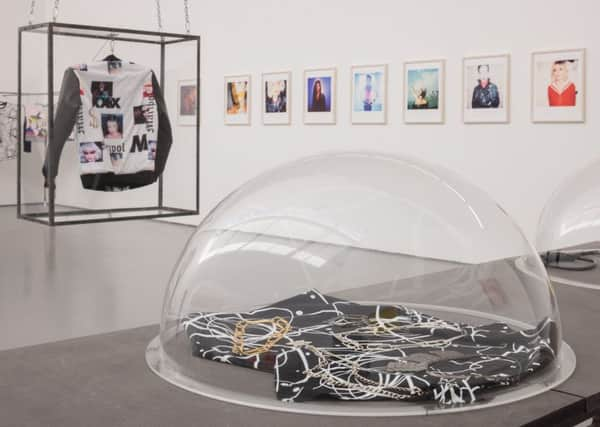Art reviews: Maripol, Clare Stephenson & Zoe Williams


Back when I was dancing to Grace Jones in my friend’s kitchen the French artist and stylist Maripol was rifling through the model and singer’s New York wardrobe, snapping her with the preposterous blond Dolph Lundgren and persuading her to laugh or snarl to capture that extraordinary red mouth and blaze of teeth.
When I was gazing in awe at Deborah Harry in a white dress and sandals on the cover of Blondie’s Parallel Lines, Maripol was the stylist trying in vain to hitch up Harry’s hemline so it sat slightly above her knees.
Advertisement
Hide AdTrained at the École des Beaux-Arts in Paris, she arrived in New York in the late Seventies, setting up in a downtown loft with her fashion photographer boyfriend. Within a few years she was a designer at quintessential Eighties brand Fiorucci in its fluorescent heyday. A jewellery designer and stylist, Maripol’s self portraits also reveal she was a rare beauty herself. She hung out at Max’s Kansas City and later at Studio 54. Her neighbours were Kid Creole and the Coconuts.
Maripol occupies a pivotal place in the point where the underground meets the mainstream. If her milieu was a downtown world of artists’ lofts and glamour-meets-squalor, her image-making was amongst those on the up in mass culture.
Blondie’s 1978 album was one achievement, but it was another ambitious blond with whom Maripol’s name is intertwined. She styled a certain Madonna through her eponymous first album, and helped hone the lace and legging, crucifix and bangle era of her career-defining record Like a Virgin. Rather sweetly at Dundee, as well as Maripol’s polaroids of Madonna in a pink fright wig in a rather fetching pairing with Andy Warhol, there are a selection of the type of rubber bangles she wore shown in display cases alongside curator Graham Domke’s own collection of vinyl by the material girl herself.
These days when I talk about the 80s on these shores I try to emphasise the period’s awfulness as well as its excitements and I guess the subtext in Spring/Summer 2015 is a kind of grimnness too.
The carefree hedonism that Maripol’s pictures celebrate must be set against the reality of New York’s Downtown in that era. There are shadows amongst the saturated colour, the losses of the early days of the AIDS epidemic, the drug deaths and casualties. Maripol at 60 is a survivor. The show features her images of actor Klaus Nomi, and the painters Jean-Michel Basquiat and Keith Haring who were amongst those lost on the way.
If Maripol defined the look of an era then she anticipated something else we think of as the very definition of shallow modern narcissism. The polaroid, like the selfie, offered a kind of instant gratification. But like the selfie it suggested something else too: that a haircut, a blaze of red lipstick, an image of a dress constructed out of old tulle, or a bracelet made out of industrial rubber tubing might be an artistic gesture in itself. The chance to shape and reshape an image was not just shallow vanity but a means of escaping external definition; the chameleon-like sexuality and improvised fashion were self-created and set against the hollow values of corporate fashion and media.
Advertisement
Hide AdIt is somewhere in these ideas that we find Clare Stephenson’s sculpture, incorporating carefully printed bikinis slung casually over domestic radiators installed in the gallery, and the image of giant Martini glasses, a 2D graphic made three-dimensional and constructed out of wood. Sophistication here is an illusion, these are artisan constructions, but the question of who defines our desires and how we might consume or cast them off lies hanging in the air.
There’s a similar ambiguity to the art of Zoe Williams, whose new film Fleece shows a prone nude, studded with jewels and surrounded by silk and wool.
Advertisement
Hide AdIt’s a luscious yet incongruous experience. The short video Drench was a highlight of the Master of Fine Art degree show at Glasgow when Williams graduated in 2012. With the pumped up aesthetic of Kylie Mingoue’s hot pant moment in the video for Spinning Around, the film focuses on a back lit bar and luscious scent bottles, using the hype and sensuality of perfume advertising to explore the way we respond to both marketing and erotic signals.
Both of these works are so knowing in their understanding of the way advertising and image-making works they also give back to Maripol’s work a sense of its own freshness. Her work may feature the artists and future megastars of the Eighties but it has a rawness and energy that still disarms.
• Until 21 June